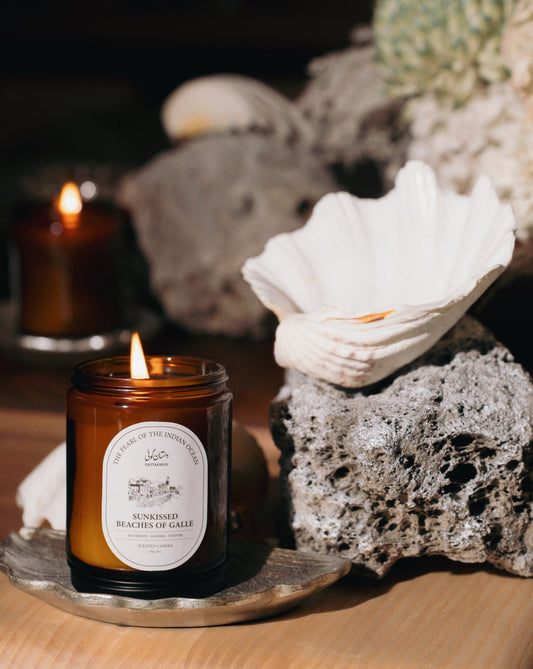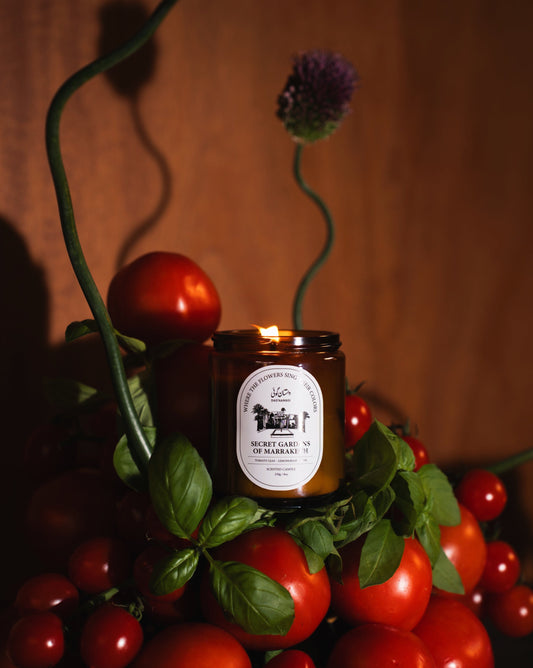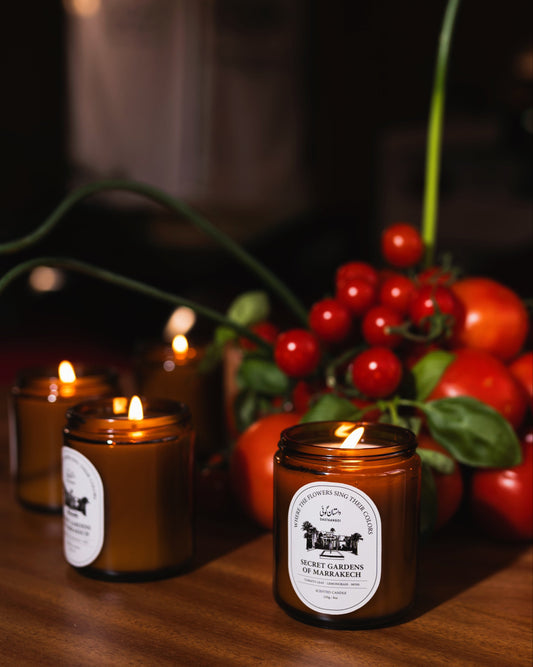Ajrak
01 Jul 2021
Ajrak is a unique form of block printing found mostly in Sindh, Pakistan.
The etymology of “Ajrak” can be traced to the Sanskrit word “a-jharat”, meaning something that does not fade. Some also say the Sindhi word ajrak (اجرڪ) comes from Persian language ajar or ajor (اجر) meaning brick and -ak (ک) meaning little. Others say ajrak comes from the Arabic word ‘Azrak’ which means blue, referring to the indigo colour prominently used in this textile.
Early human settlements in the lower Indus Valley found a way of cultivating and using Gossypium arboreum commonly known as tree cotton to make clothes. These civilizations are thought to have mastered the art of making cotton fabrics.
A bust of a priest-king excavated at Mohenjo-daro, currently in the National Museum of Pakistan, shows one shoulder draped in a piece of cloth that resembles an ajrak – adorned with a trefoil pattern sprinkled with small circles filled with a red pigment. Excavations elsewhere in the Old World around Mesopotamia have yielded similar patterns on various objects, most notably on the royal couch of Tutankhamen. Ajrak can be called the identity of Sindh and Sindhi people. Ajrak is a symbol of pride and respect for men and glory for women. Sindhi people also present Ajrak as gesture of hospitality to their guests.
The level of geometry on the garment comes from the usage of a method of printing called woodblock printing in which prints were transferred from geometric shapes etched on the wooden blocks by pressing them hard on the fabric. Ajraks are usually about 2.5 to 3-meters long, patterned in intense colours predominantly rich crimson or a deep indigo with some white and black used sparingly to give definition to the geometric symmetry in design.
The etymology of “Ajrak” can be traced to the Sanskrit word “a-jharat”, meaning something that does not fade. Some also say the Sindhi word ajrak (اجرڪ) comes from Persian language ajar or ajor (اجر) meaning brick and -ak (ک) meaning little. Others say ajrak comes from the Arabic word ‘Azrak’ which means blue, referring to the indigo colour prominently used in this textile.
Early human settlements in the lower Indus Valley found a way of cultivating and using Gossypium arboreum commonly known as tree cotton to make clothes. These civilizations are thought to have mastered the art of making cotton fabrics.
A bust of a priest-king excavated at Mohenjo-daro, currently in the National Museum of Pakistan, shows one shoulder draped in a piece of cloth that resembles an ajrak – adorned with a trefoil pattern sprinkled with small circles filled with a red pigment. Excavations elsewhere in the Old World around Mesopotamia have yielded similar patterns on various objects, most notably on the royal couch of Tutankhamen. Ajrak can be called the identity of Sindh and Sindhi people. Ajrak is a symbol of pride and respect for men and glory for women. Sindhi people also present Ajrak as gesture of hospitality to their guests.
The level of geometry on the garment comes from the usage of a method of printing called woodblock printing in which prints were transferred from geometric shapes etched on the wooden blocks by pressing them hard on the fabric. Ajraks are usually about 2.5 to 3-meters long, patterned in intense colours predominantly rich crimson or a deep indigo with some white and black used sparingly to give definition to the geometric symmetry in design.
Sample Image Gallery
930 x 520px
SPRING SUMMER LOOKBOOK
Sample Block Quote
Praesent vestibulum congue tellus at fringilla. Curabitur vitae semper sem, eu convallis est. Cras felis nunc commodo eu convallis vitae interdum non nisl. Maecenas ac est sit amet augue pharetra convallis.
Sample Paragraph Text
Praesent vestibulum congue tellus at fringilla. Curabitur vitae semper sem, eu convallis est. Cras felis nunc commodo eu convallis vitae interdum non nisl. Maecenas ac est sit amet augue pharetra convallis nec danos dui. Cras suscipit quam et turpis eleifend vitae malesuada magna congue. Damus id ullamcorper neque. Sed vitae mi a mi pretium aliquet ac sed elitos. Pellentesque nulla eros accumsan quis justo at tincidunt lobortis deli denimes, suspendisse vestibulum lectus in lectus volutpate.
Tags:







